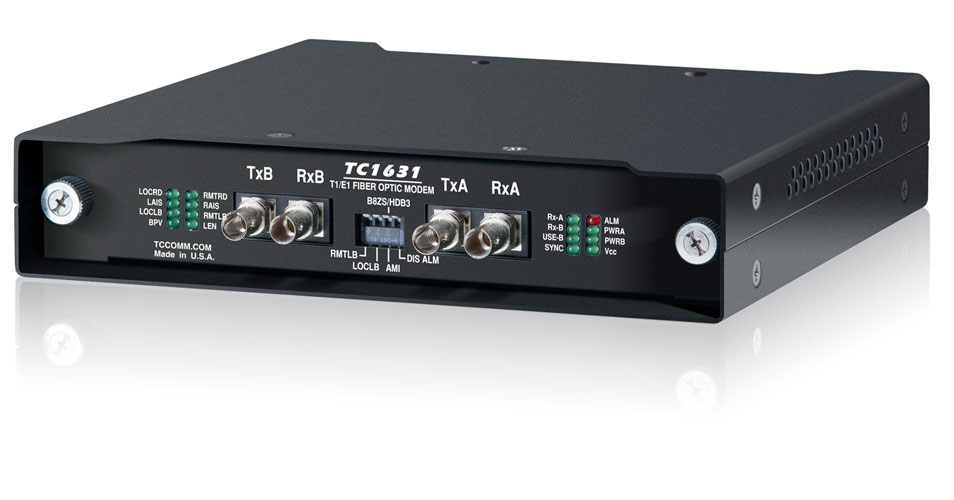News and Product Updates
Built to Last: How the First TC Communications Product Lives On
08/21/2024While TC Communications, Inc. has grown and evolved its catalog since its founding, some products hit the nail on the head the first time around.
Exhibit A: the TC1620, TC Communications’ earliest product. Despite being designed over 30 years ago, the TC1620 pioneered a technological concept that still sells to this day; the prototype has undergone only minor modifications leading up to its current iteration, the TC1631. As the adage goes, “if it ain’t broke, don’t fix it.”
The story behind the TC1620 is an interesting one. The TC1620, a T1 fiber optic modem, is significant in TC Communications’ history for two reasons—one more practical, the other more sentimental. Born under the tremendous pressure CEO and founder, Kai Liang, faced to deliver a product and fulfill pressing financial obligations, the TC1620 not only was the first official company product, but the first digital product Liang had ever designed and built on his own. Though he had tinkered around with electronics since he was a child, his education and experience had never focused on design, let alone product deployment.
Liang’s initial role in the company was on the business side, leveraging his experience running a computer store with partners in charge of product design. After his business partners unexpectedly left the venture, he found himself with one of the company’s first major orders to fulfill, a considerable amount of debt from relatives to fund the venture, and only a partially working product.
“It was basically all or nothing,” Liang says. “I needed the business to succeed because I owed it to those from whom I had borrowed.”
As a child, Liang was fascinated by electronics, his overactive mind often taking detours through cities of circuits, switches, and diodes during school, much to the chagrin of his teachers, who gave him a hard time for it. Getting his hands on modern design tools that he previously could only dream of reignited his early passion. As he picked up the incomplete project and discovered present-day microcontrollers, field programmable gate arrays, and other tools, “It was like an engineer’s dream; I only had breadboards growing up!”
Amid the pressure, Liang’s hard work and design creativity paid off. The TC1620 T1/E1 Fiber Optic Converter Modem fulfilled a market need to transport T1 signals between two points and convert them from analog to digital. Such was especially important for large commercial enterprise and military applications at the time.
The TC1620 was not necessarily the best-selling TC product during the company’s early years, but it provided cash flow and jump-started the creation of several other products, such as the TC8116, a fiber optic data multiplexer, and the TC8916, a broadcasting and receiving device, both of which are still being manufactured and sold to this day.
Although the TC1620 is not being sold anymore, its successors, the TC1630 (retired in 2020) and the current TC1631 have retained the original’s concept and serve the same purpose, only adding newer capabilities. For example, as higher-quality manufacturing materials became available, the TC1630 and TC1631 were modified to support a broader operating temperature range (-20°C to 70°C). The TC1631 can also provide optical redundancy with an optional second optic pair for single or dual fiber operation. Fundamentally, however, it is the same as the TC1620.

The TC1620 remains significant not only for the breakthrough it represents for Liang and the company in its early years, but for serving as a reminder of the challenges Liang faced—both at the time and during his formative years—and his ability to overcome them.
Huge amounts of R&D and testing go into every TC Communications product, and as technologies improve, our company strives to keep pace, debuting new products with advanced features and capabilities that set industry standards. What never changes, however, are tried and true hallmarks of good engineering. Materials and features may evolve over time, but scientifically sound principles never change.